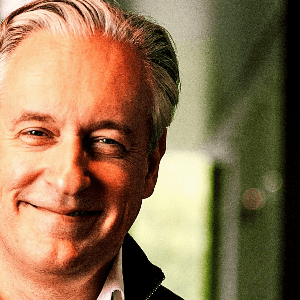To succeed in a competitive environment means taking the customer experience to the next level, where value extends beyond the product or service itself. It’s about creating a community of loyal followers through genuine appreciation and recognition.
This is where Customer Loyalty Incentives come in.
What are Customer Loyalty Incentives?
Customer Loyalty Incentives are your brand’s way of giving a hat tip to your most loyal customers. Think of them as a blend of appreciation, a sprinkle of exclusivity, and a whole lot of strategic thinking to keep your customers hooked and happy.
Types of Customer Loyalty Incentives
Discount Programs
Discount programs are straightforward yet powerful. They offer customers a percentage off future purchases, motivating them to return. For example, a “10% off on your next purchase” offer can significantly increase the likelihood of repeat business.
Points Programs
Points programs are the gamification of customer loyalty. Customers earn points for each purchase, which they can later redeem for discounts, products, or exclusive deals. This system encourages ongoing engagement, as customers are incentivized to accumulate points over time.
VIP Benefits
VIP or tiered programs reward top spenders with exclusive benefits. These perks might include free shipping, special customer service lines, or access to limited-edition products. It’s about making your most loyal customers feel special and appreciated.
Exclusive Access
Giving loyal customers first dibs on new products, sales, or events fosters a sense of exclusivity and belonging. It’s like being part of an exclusive club where being a loyal customer has its perks.
Referral Rewards
Referral rewards incentivize your existing customer base to bring in new customers. It’s a win-win; your loyal customers get rewards for each successful referral, and your customer base grows.
How to Start with Customer Loyalty Incentives
Identifying Your Goals
Before launching a loyalty program, pinpoint what you’re trying to achieve. Is it more repeat purchases, higher average order value, or something else? Your goals will shape your program’s design.
Understanding Your Customers
Dive into your customer data to understand buying behaviors and preferences. Tailor your loyalty incentives to match what your customers value most, ensuring your program resonates and engages effectively.
Technology and Tools
Several platforms can help manage your loyalty program, from integrating with your point-of-sale system to standalone software solutions. Choose technology that fits your scale, budget, and needs.
Measuring Success
Define key performance indicators (KPIs) such as participation rate, redemption rate, and impact on repeat purchases. Regularly review these metrics to gauge your program’s effectiveness and areas for improvement.
Best Practices
Personalization
Customize the loyalty experience by leveraging customer data. Personalized rewards not only feel more valuable but also strengthen the emotional connection with your brand.
Simplicity and Accessibility
Ensure your loyalty program is easy to understand and join. Complicated rules or redemption processes can deter participation. The simpler it is, the better.
Continuous Improvement
Your loyalty program shouldn’t be set in stone. Regularly solicit feedback from your customers and adjust your offerings based on their preferences and your business goals.
Successful Customer Loyalty Incentives Examples
Example 1: Starbucks Rewards
- Overview: Starbucks Rewards is one of the most celebrated customer loyalty programs globally. It uses a mobile app where customers earn stars for every purchase made at Starbucks. These stars can then be redeemed for free drinks, food items, and more.
- Strategy: The program is designed to encourage repeat purchases through a tiered rewards system. Customers earn more benefits as they collect more stars, such as free birthday drinks, free refills on certain drinks while in the store, and the ability to order and pay ahead using the mobile app.
- Outcome: The Starbucks Rewards program has significantly increased customer retention and sales. By making the rewards accessible and desirable (free food and drinks), and integrating the program with a convenient mobile app, Starbucks has created a compelling reason for customers to keep coming back.
Example 2: Sephora Beauty Insider
- Overview: Sephora’s Beauty Insider program is a tiered loyalty program that rewards customers with points for every dollar spent. These points can be exchanged for a wide variety of rewards, including exclusive products, samples, and experiences.
- Strategy: The program is segmented into three tiers (Insider, VIB, and Rouge), with each tier offering progressively more exclusive benefits. Benefits include birthday gifts, access to a private hotline, and invitations to exclusive events. The program emphasizes personalization, with rewards tailored to the beauty interests and purchase history of each customer.
- Outcome: Sephora has successfully fostered a strong community of loyal customers. The Beauty Insider program encourages more frequent purchases and increases the amount customers spend per transaction. It also enhances customer engagement by offering personalized experiences and rewards, making customers feel valued and understood.
Example 3: Amazon Prime
- Overview: Amazon Prime is a paid subscription program that offers members a variety of benefits, including free two-day shipping on millions of items, access to streaming services, and exclusive shopping deals.
- Strategy: The program focuses on providing exceptional value through convenience and exclusive benefits, making the annual fee seem worthwhile to millions of customers. Prime creates a sense of exclusivity and encourages members to consolidate more of their shopping on Amazon to take full advantage of their membership benefits.
- Outcome: Amazon Prime has not only increased customer loyalty but also significantly boosted annual spending per member. The convenience of fast, free shipping, along with the added value of streaming services, creates a compelling incentive for customers to renew their membership and continue shopping on Amazon.
Final Tip
Remember, the goal is to create a loyalty program that feels less like a transaction and more like a mutual appreciation club, where every interaction strengthens the bond with your customers.
Frequently Asked Questions
Keep a close eye on industry trends and customer feedback. Innovate continuously to keep your rewards fresh and engaging.
Absolutely! Even on a smaller scale, personalized and thoughtful incentives can create a loyal customer base that feels valued and understood.
Focus on metrics like program participation rates, increase in average order value, customer retention rates, and, importantly, customer feedback.



